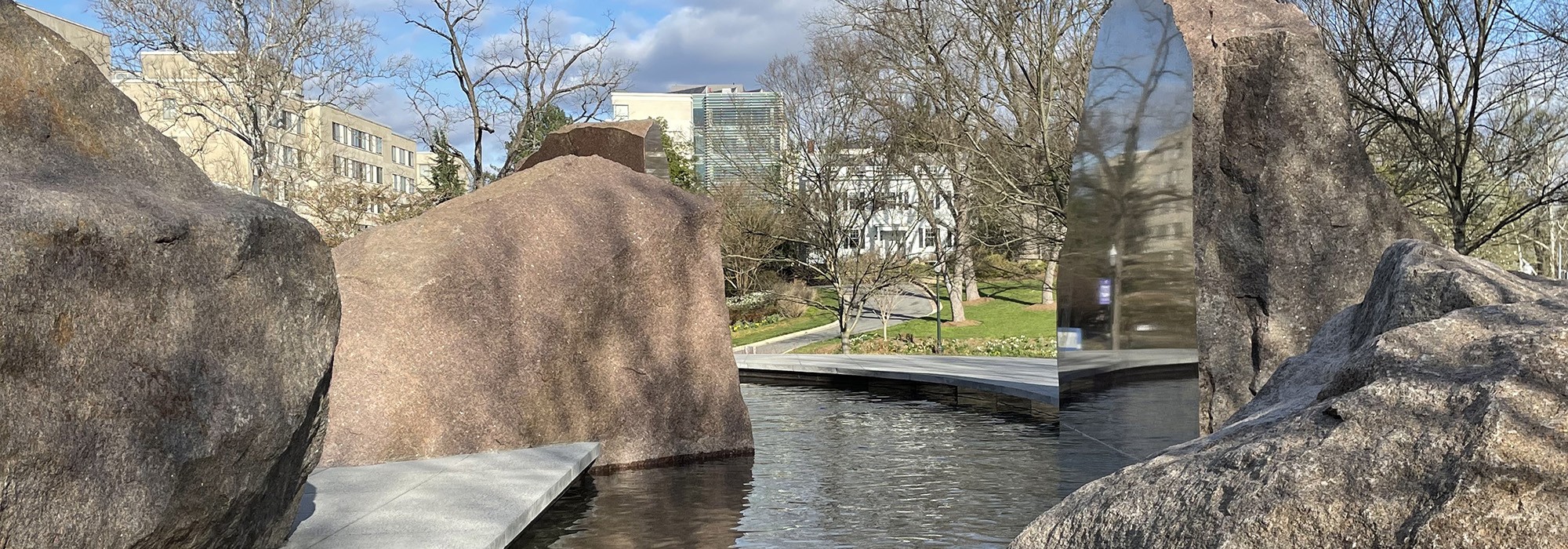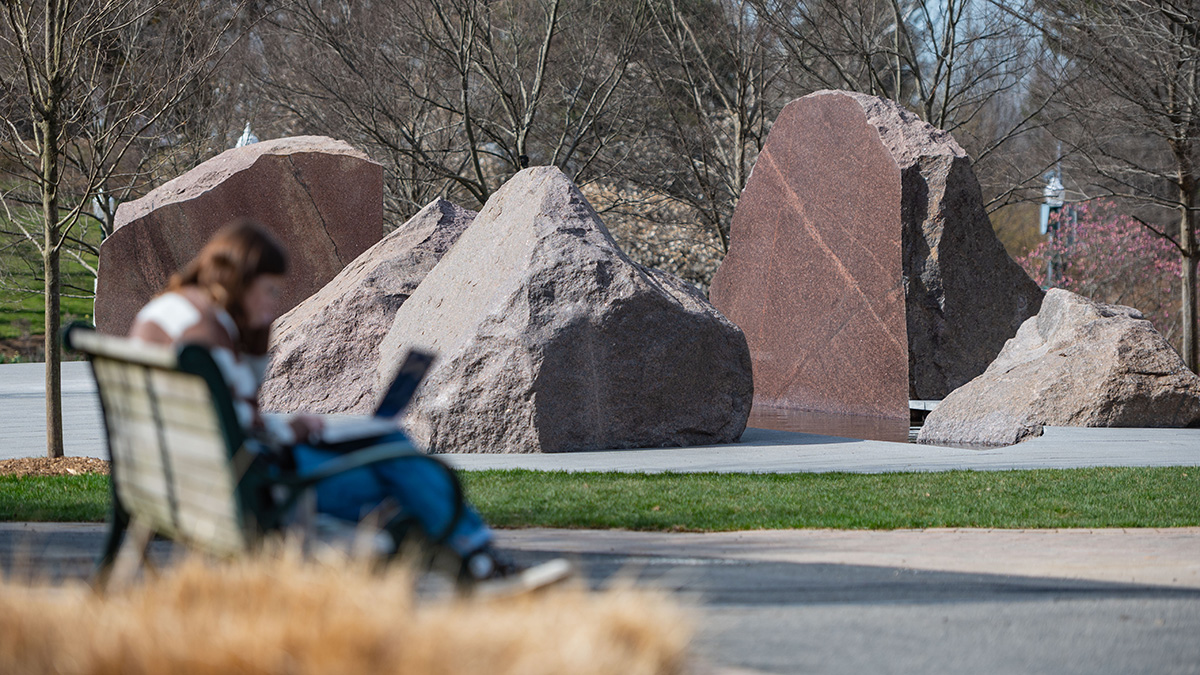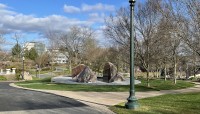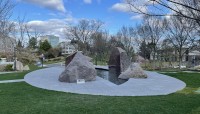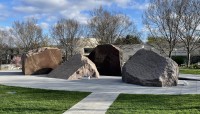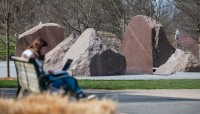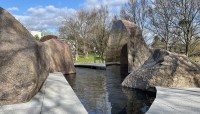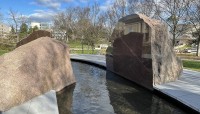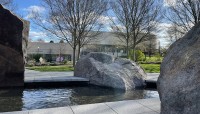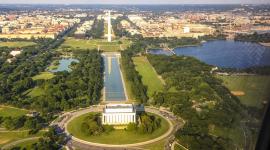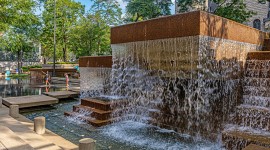Landscape Information
This 450,000-pound installation by artist Elyn Zimmerman on the American University campus in Washington, D.C. is principally comprised of five mahogany-colored South Dakota granite boulders arranged on either side of a crescent-shaped pool. Three of the boulders have highly polished and reflective surfaces, mirroring one another across the pool along with passing pedestrian and vehicular traffic. The boulders are set within a flat oval paved surface that hovers above the water. The ensemble is encircled by lawn, inset with established deciduous canopy trees, that is bordered all around by a brick pathway. There are borrowed views to the adjacent undulating topography and several university buildings including the Katzen Arts Center.
Sudama was created from boulders that had previously been part of the site-specific installation Marabar, formerly on the National Geographic Society (NGS) campus in Washington, D.C. Marabar was commissioned for NGS’ courtyard to complement a building addition by Skidmore, Owings & Merrill and opened in 1984. Due to a partial campus redesign, Marabar was disassembled in 2022. After visiting various potential properties, Zimmerman chose an elipse on the American University campus across Massachusetts Avenue from the Katzen Arts Center, where the structure would be visible from Ward Circle. The artist worked with the Washington, D.C.-based landscape architecture firm Lee and Associates, Inc. Beginning in September 2022, Sudama was installed on an elevated site behind the university’s Kay Spiritual Life Center, accessed via a staircase from Massachusetts Avenue and ramping walks. It was gifted by NGS and dedicated on April 4, 2023.
The names Marabar and Sudama come from E.M. Forester’s novel A Passage to India. Marabar is derived from the Barabar Caves, while Sudama is the name of a Barabar Cave.



